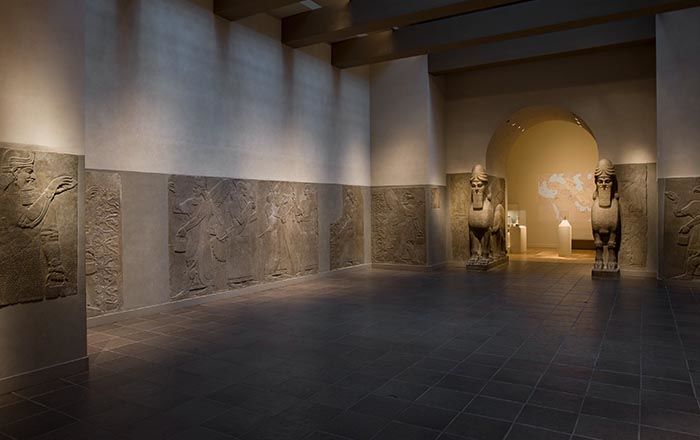The Palace of Sargon at Khorsabad
Alfred Charles Conrade British
Not on view
Following the excavation of Assyrian palaces in the mid-nineteenth century, ancient Mesopotamian imagery began to be used in European decorative arts, including jewelry and ceramics. Articles in periodicals and popular books described the excavations and removal of many sculptures from sites in northern Iraq to England and France. Related public spectacles, such as the reconstructed ‘Nineveh Court’ in the Crystal Palace at Sydenham, London, fostered a fascination with Assyria and Assyrian art among the Victorian public.
Conrade’s unfinished watercolor draws heavily on the recently excavated Assyrian sculptures to produce a street scene that resembles a theatrical backdrop. The artist sets the scene in Khorsabad, ancient Dur-Sharrukin, the capital of the Assyrian king Sargon II (r. 721–705 BCE), relying on sculptures from that palace for the long-bearded winged bulls and the standing ‘hero’ figures that hold lions in their arms. The graphite hunting scenes along the top of the walls relate to sculptures at the Northwest Palace at Nimrud, ancient Kalhu. The winged protective figures in the middle register could be based on examples from either palace. All of the figures are shaped to some degree by the artist’s own taste. For example, the physique of the large-bodied winged bulls echoes livestock of Conrade’s own day rather than the lean wild bulls known to Assyrian sculptors.
This image cannot be enlarged, viewed at full screen, or downloaded.

